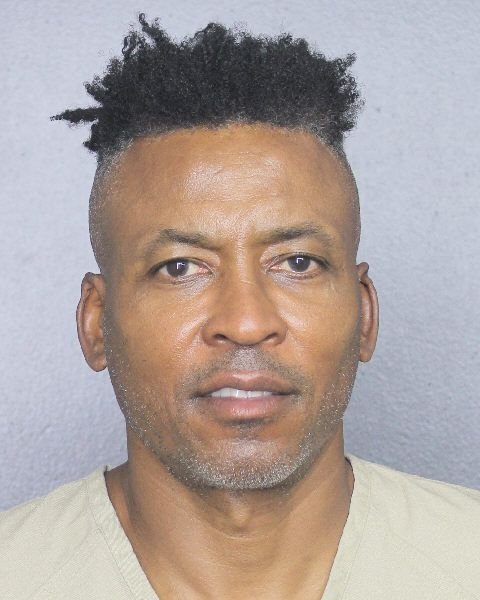You Are a Medical Commodity
/By Dr. David Hanscom
The shocking murder of a health insurance executive and the glorification – by some – of Luigi Mangione, the alleged killer, has underscored how many Americans feel about the U.S. healthcare system.
Medicine has become big business and you, the patient, are a hot commodity. You and your health problems are the main source of revenue for many companies needing to report big profits to their shareholders. In this era of so-called health reform, it’s essential to understand what this means to you – and the news is not good.
As a spine surgeon, I enjoy caring for patients and performing surgeries when needed, and do my best to help people feel better and function well. Unfortunately, most people getting spine surgery today not only won’t be helped, they’ll suffer more as a result of complications from surgeries they shouldn’t have.
For example, let’s look at spinal fusion for low back pain. There is clear research showing that only about 25% of patients significantly benefit from a spine fusion for lower back pain. Another report from Washington State, where I practiced, showed that just 15% of people who had a spinal fusion returned to work one year after their operation.
Physicians today are trained to use evidence-based data to make treatment decisions – and yet, when it comes to low back pain, the data is routinely ignored. A 2009 study showed that physicians eschew established clinical guidelines for best practices in treating back pain.
3 Patient Stories: George, Teresa and Tom
George, a middle-aged businessman, had lower back pain. The first spinal fusion he had didn’t help, so he had another. As a result of complications from that second (unnecessary) surgery, he lost bowel and bladder function, and has to walk with crutches.
Teresa was struck in the back by a swinging steel beam while at work. It was a significant blow, but she only had a bruise, no fractures. Her discomfort was treated with 15 sets of injections that included facet blocks, epidural cortisone injections, and dye into most of her discs.
She also underwent a spinal fusion from her neck down to her pelvis – an operation that made it impossible for her to stand upright, as she was fused in a flexed-forward position. I was able to help her stand up straight again after a 10-hour procedure that involved cutting her spine in two to re-straighten her back.
Had Teresa only gotten some work on her back muscles after the workplace injury, she could have gone back to everyday life without surgery.
Tom had a narrowing of his lumbar spinal canal caused by spinal stenosis, which caused weakness in his legs. The stenosis should have been treated with a simple, three-level laminectomy (simple removal of bone), as his spine was stable. Instead, he had surgery to fuse his spine at eight levels from his 10th thoracic vertebra to the pelvis. A fusion is only indicated for an unstable spine and is a much bigger operation.
After the fusion, Tom suffered a series of infections and fractures, requiring 15 additional operations in 30 months. He is now solidly fused at 24 levels from the base of his skull to his pelvis. He did not do well.
I could share dozens of stories like these, all with a common theme. Though they were experiencing back and leg pain, not a single one required fusion surgery. Fusions are necessary and helpful only for unstable or deformed spines, and they do not relieve back pain. The more significant number of levels fused during surgery requires more extended operations, which have a higher chance of complications.
All three of the patients I described above could have been helped with a structured spine care program to implement known effective treatments to decrease their pain and improve the odds of a successful surgery.
Instead, they were subjected to unnecessary risks and unspeakable misery. Spread out over the hundreds of thousands of other patients who could tell similar stories, the costs to society in dollars and human suffering are enormous.
Why Is This Happening?
There are several reasons, some concerning how doctors are trained, but money is a significant factor. Spinal fusion is a lucrative procedure for hospitals. Hospitals now employ an increasing number of physicians and many use their electronic medical records to track the number of diagnostic tests that their doctors order and the surgical procedures they perform. Doctors are rewarded financially with bonuses for doing as many surgeries as possible, but they get negative ratings for not doing enough to contribute to the institution's profitability.
That’s bad enough, but even worse, these highly profitable procedures have been well-documented as not working. Effective treatments are often (usually) not covered by insurance. Instead of solving and preventing disability, the business of medicine is creating it. The total cost of chronic disease in the U.S. is approaching $4 trillion a year. Yet nothing is being done to solve it.
The Hippocratic Oath swears us doctors to first to do no harm. That also means doing the right thing for our patients, regardless of the situation. It is often said that the financial incentives need to change to create a healthier medical system. The Oath does not say to treat patients with the best standard of care only if they can pay for it.
One place change has to occur is with each physician refusing to be intimidated by hospital administrators and by demanding more time to talk to their patients.
This is a complicated state of affairs, and I am not blaming any group for causing it. I am continually impressed by how committed physicians are to doing the right thing for patients. But in this practice-for-profit climate, they need to be allowed more time or be given the resources to do so.
Only about 10% of spine surgeons implement psychological screening prior to surgery that will optimize a patient’s chances of a successful outcome. Many surgeons don’t feel it is their responsibility. Really? Are we going back to the days when barbers were the surgeons? Are we only technicians?
Hospital systems are problematic because administrative costs have risen 3,000% over the last 10 years, while physician salaries have grown by 15%. The increased “productivity” goes directly into management’s pockets.
BTW, 65% of personal bankruptcies are caused by medical bills. Could this be a factor in creating our homelessness epidemic?
Profits Over Safety
The core problem lies with the healthcare-for-profit model and the scale at which it is being practiced. It is focused on making money off of illness, rather than encouraging wellness. Businesses must operate profitably, but at whose expense? Is there any shareholder willing to trade their health for the betterment of the bottom line? Why should you be the one to be the fuel for this machine?
We can’t afford to continue down this road. Medical consumers – that’s you, me, and our husbands, wives, mothers, fathers, sisters, brothers, sons, and daughters -- are the core revenue source. We must become better, more educated and more vocal consumers of healthcare, and we must refuse to be treated like medical commodities.
This effort needs to begin NOW and with one person at a time. You deserve much better than this.
David Hanscom, MD, is an orthopedic spine surgeon who has helped hundreds of back pain sufferers by teaching them how to calm their central nervous systems without the use of drugs or surgery.
David is the author of ”Back in Control: A Spine Surgeon's Roadmap Out of Chronic Pain,” one of the books on back pain that was read by Luigi Mangione.












